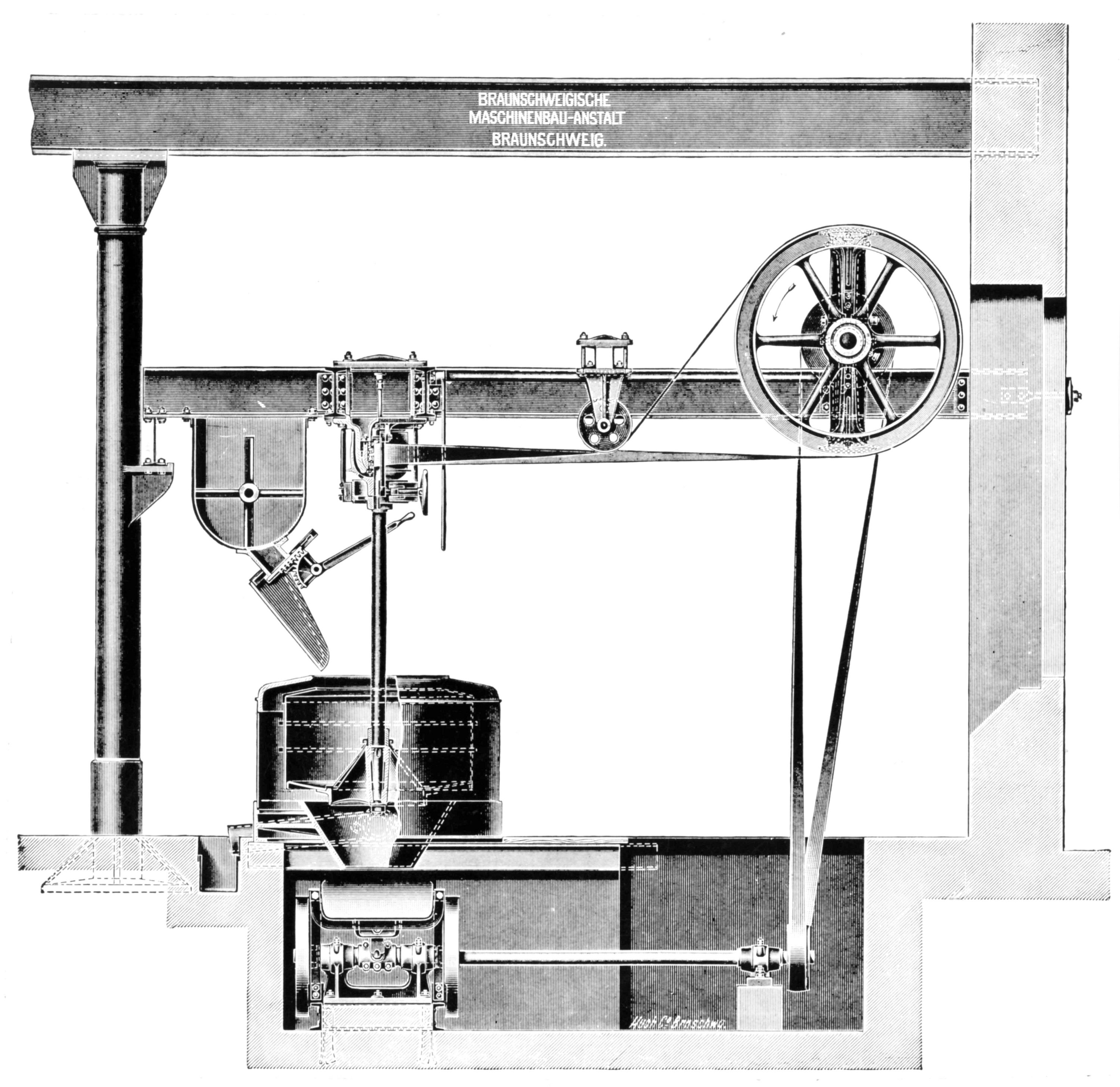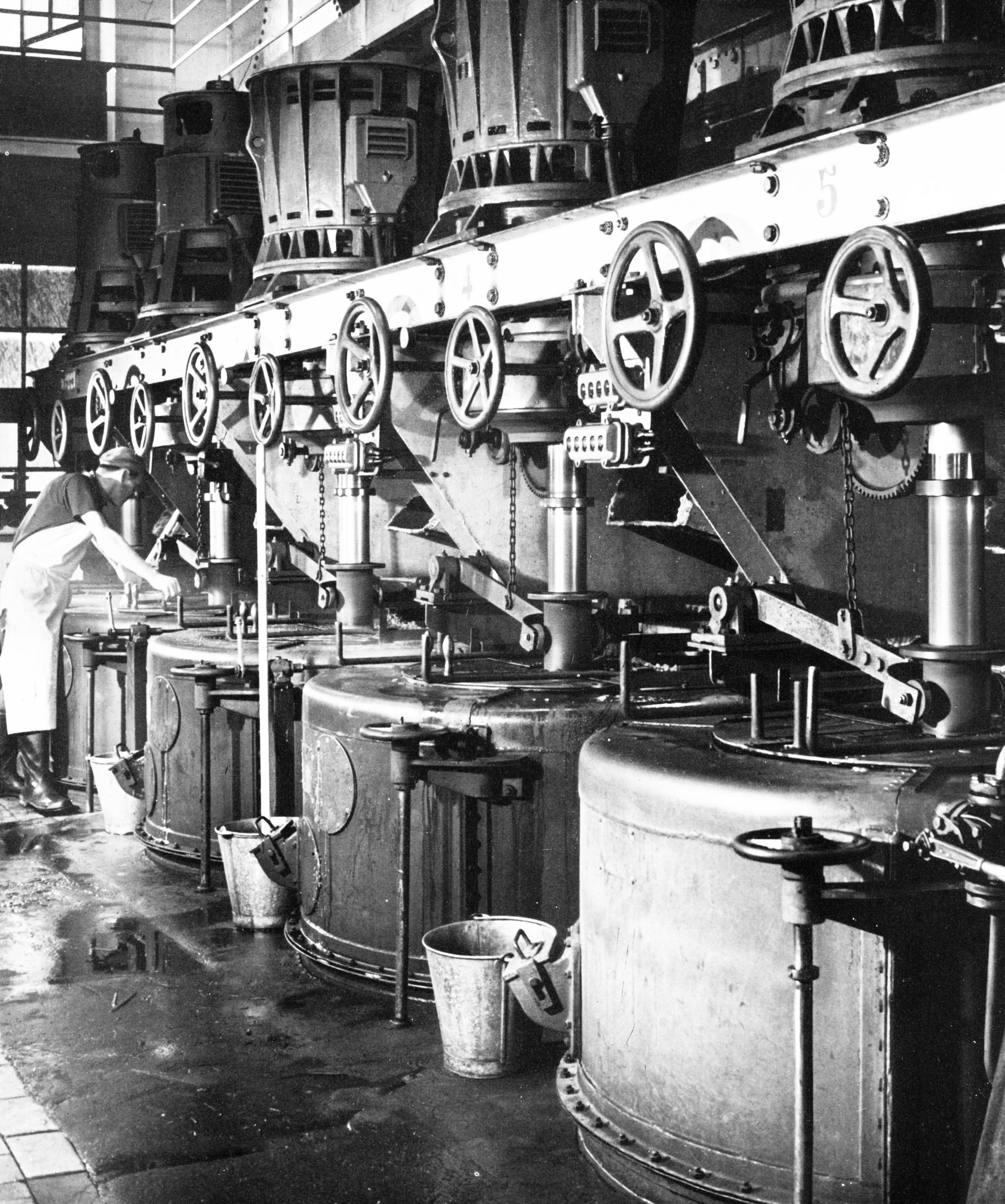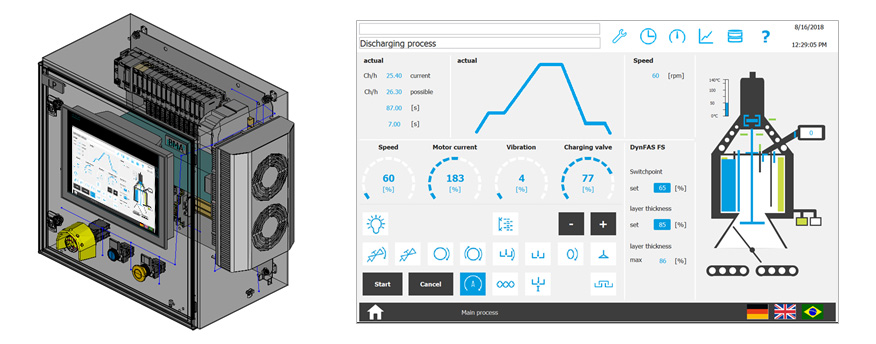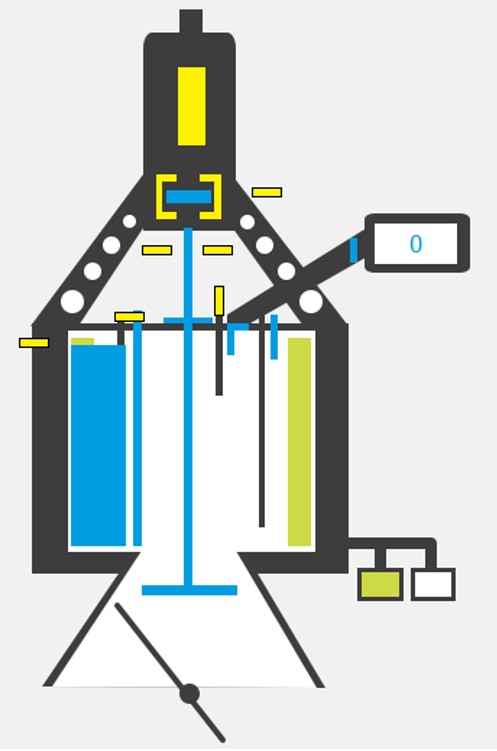The digital revolution in the second half of the 20th century has also influenced the interface design of centrifugals from BMA.
Since the mid-1980s, every machine has been fitted with a PLC (programmable logic controller), so all the data collected by the various sensors and measurement devices found throughout the centrifugal can be monitored and analysed, permitting automated operation of the machine. The current generation of centrifugals is largely controlled via touchscreen. Unlike with fixed buttons or slider controls, the display interface can be adapted to suit each customer. Navigation through the GUI is via nested menus. All relevant data on the process stages (filling, acceleration, discharging) and the performance status are combined in a single screen.
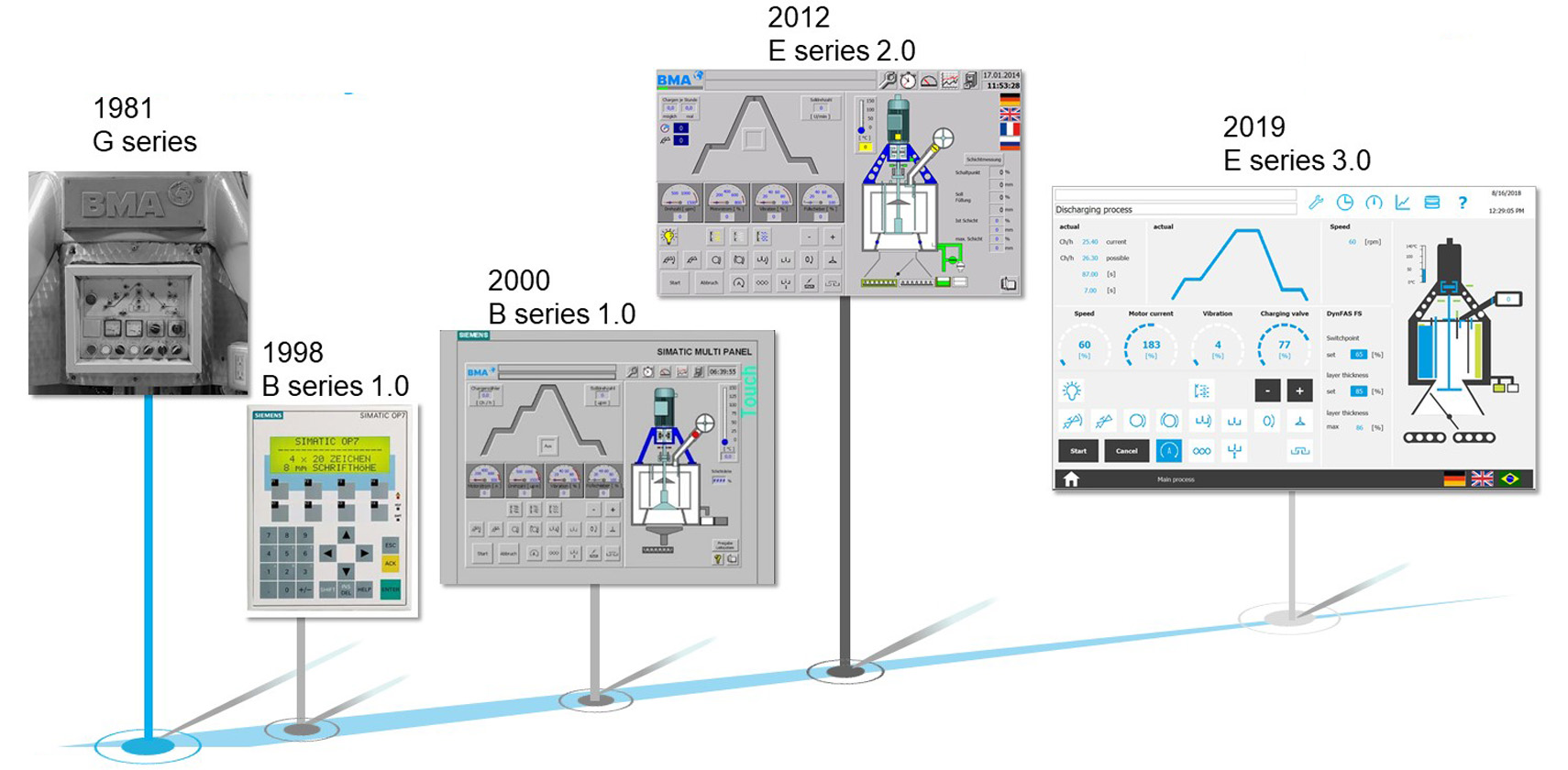
01.07.2020
Levers are out, touchscreens are in
How the interface design of our centrifugals has evolved
In the last 150 years, BMA has developed and launched a range of different centrifugal types. With each new model, we have drawn on research and experiences gained in the field, driven by our customers’ high standards. This is equally true for interface design.
Centrifugal development at BMA has always taken into account the latest technical and technological aspects. The term human-machine interface, or HMI for short, refers to the state-of-the-art interface for communication between a user and a machine. How has the interface design of our centrifugals evolved over the past century and a half? What are the major milestones?
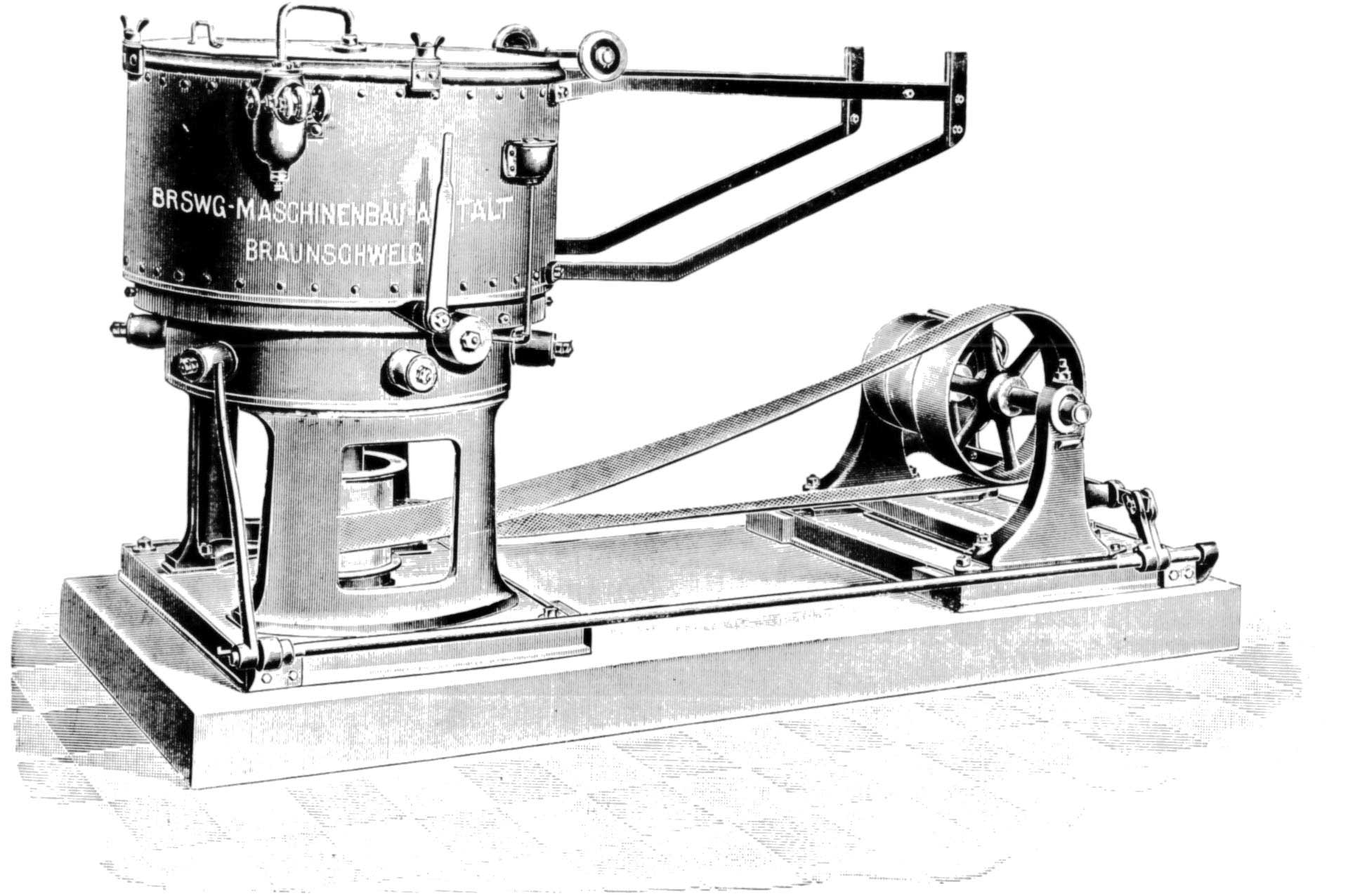
Sugar centrifugals have been a key standard product for BMA since its early days. Our first centrifugals, dating from 1860, were batch-type machines with a belt drive and manual discharge. As experiences mostly gained in the field were analysed and the findings implemented, and with continuously improved machine parts, the first pendulum centrifugals with an electric motor were launched around 1900. These machines featured levers and switches. The focus in interface design was on the machine, not on the user.
When the focus was on the machine
The next image on the left shows a centrifugal that is controlled using levers and handwheels, as were commonly used in mechanical and plant engineering at the time. They were mounted on fittings, machinery or gear motors, where they opened and closed valves. The image on the right shows an old centrifugal station at the Königslutter sugar factory in Germany.
A leap in development – control systems go electric: G1000 centrifugal from BMA
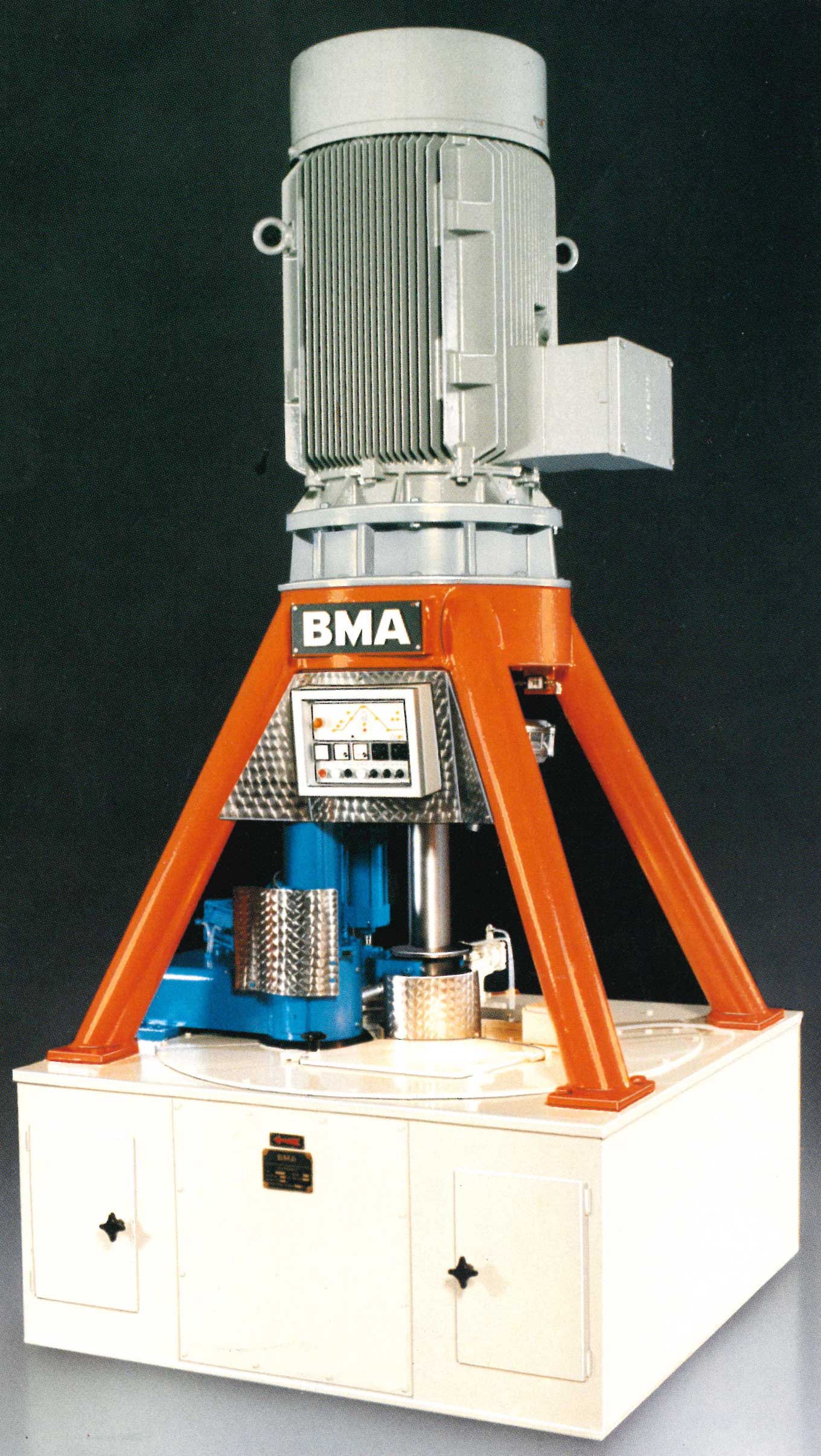
'G1000 BMA-centrifugal' illustrates how the controller became the central machine element. This development in interface design also resulted in a language change. Located in central position on the centrifugal frame, the controller is now referred to as the control unit, which comprises all operating switches and controllers. All movements are electropneumatically controlled and monitored using limit switches. Indicator lights on the control unit signal the process stages and any malfunctions that may occur. Levers and handwheels have been replaced by buttons, switches and indicator lights. With this design, the machine can be controlled using a programmable logic controller, or PLC. The adjustment of centrifugal settings no longer depends on the operator’s skill and experience; instead it is based on standard configurations in the central control unit.
Benefits of a graphical interface
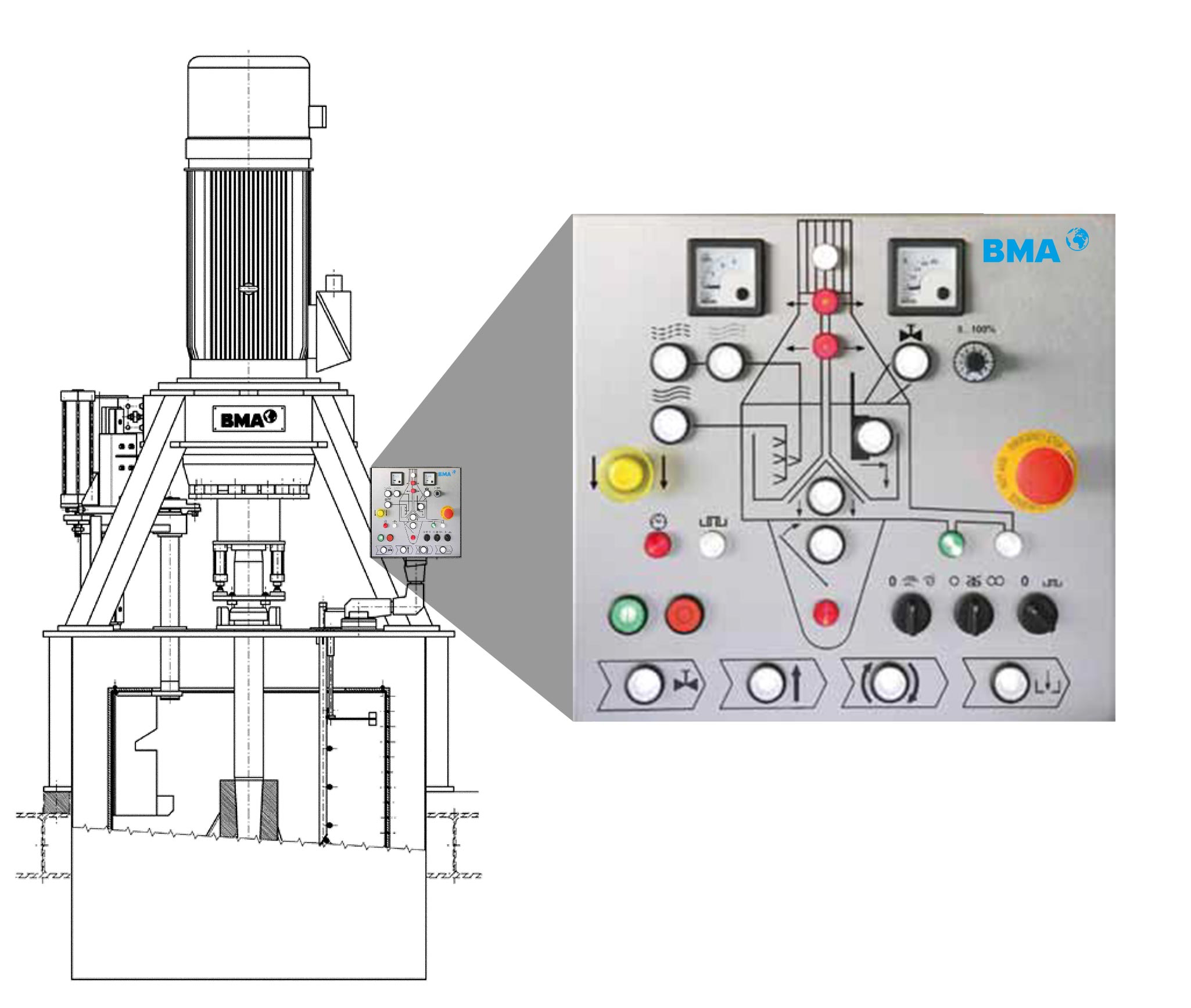
'BMA S7 HD control' shows how clearly structured graphics and the systematic arrangement of buttons, switches etc. make for simpler operation of this generation of centrifugals. For ease of operation, the control unit is positioned on a movable pivot arm. This interface design puts the operator more in focus.
From levers to touchscreens: chronology of HMI development

With this technological advancement comes an increasing shift in the machine operator’s role, towards supervising and managing of the centrifugal. The development also marks a major milestone in the introduction of essential BMA safety features.
Safety technology has a key role
Acceleration of the centrifugal basket produces a high payload. Using a combination of a programmable logic controller, or PLC, and sensors improves the machine’s reliability. The state-of-the-art centrifugal HMI will display specific errors or flag malfunctions. Such malfunctions are no longer signalled by flashing indicator lights, but with error messages or by dedicated icons on the screen.
This is possible thanks to the PLC, which offers a range of safety features. The software monitors key parameters such as vibrations or basket speed, thus ensuring smooth operation without interruptions. In the third centrifugal series, this has been included as standard.
Technical evolution of the control system
With rapidly evolving electronics and increasing market requirements, BMA presented its third series of the control system for E-type centrifugals in 2019. The latest HMI is a 12” multilingual touchscreen panel with intuitive menu navigation. Filling of the centrifugal up to the maximum massecuite level is automated. Thanks to the storage of recipes (parameters), a simple tap of the user interface lets the operator choose among different products. Water is added as required for the specific massecuite charge. The centrifugal software will notify the user of specific production situations and recommend the best possible procedure for that case. An example: it will notify the operator if caking is present in the basket, so the appropriate action can be taken. Standardised processes ensure consistent sugar quality and efficient plant operation.
Machine data accessible worldwide
The current PLC generation for E-type centrifugals from BMA includes a router with an integrated interface to the smart4sugar platform. Live machine data are available online via this interface. They can be displayed and analysed using the smart.monitoring service from BMA. Data viewing using smart.monitoring takes centrifugal interface design to a new level: data are made available at any time, anywhere in the world – even on your smartphone.
Retrofit: a second spring for centrifugals
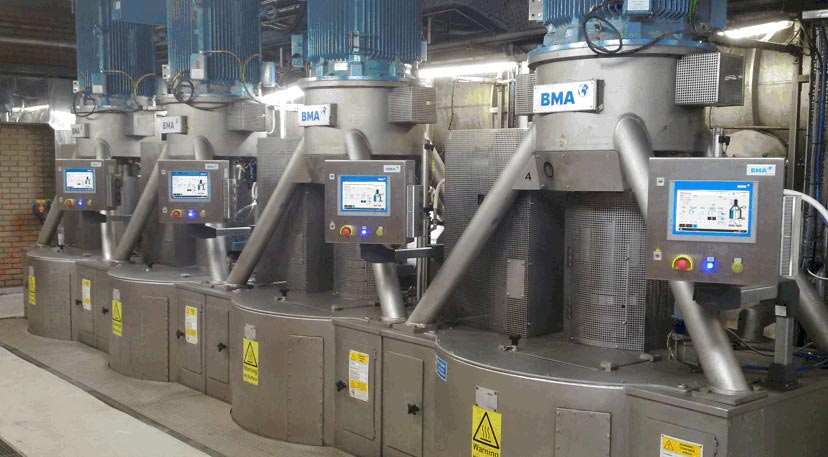
The control and electrical systems of a 20 year-old centrifugal will in many cases no longer meet current safety standards. BMA has a solution for this problem: its retrofitting service, which permits continued operation of such machines. As part of this service, G and B-type centrifugals are fitted with the latest sensors, actuators, PLC, control panel (HMI) and software. As part of the retrofit, the drive (motor and frequency converter) is upgraded to improve performance, so new production requirements can be met.
With its wide range of technical innovations, BMA has truly looked after its customers from the first industrial revolution to the current digital revolution. And the next development is just around the corner: the industrial internet of things (IIoT) for machinery, plants and equipment. BMA’s smart4sugar platform represents the starting point for all further digital activities. It permits access to operating data at any time and from anywhere on the globe.
Passion for Progress is part of our identity – which is why we all look forward to future developments, innovations and technological advancements.

